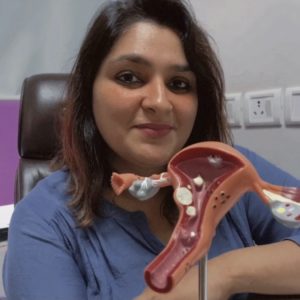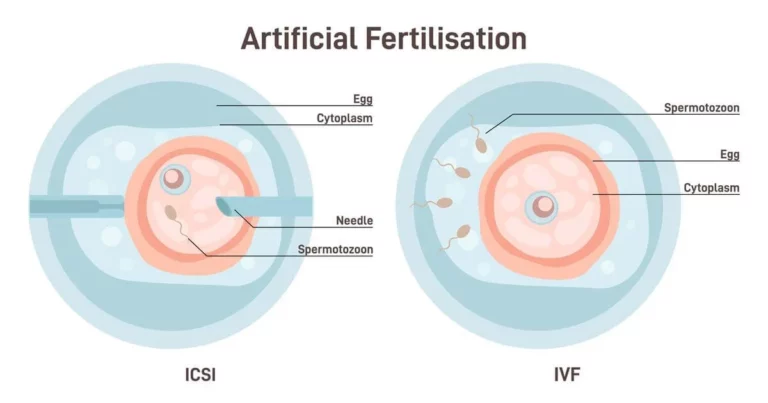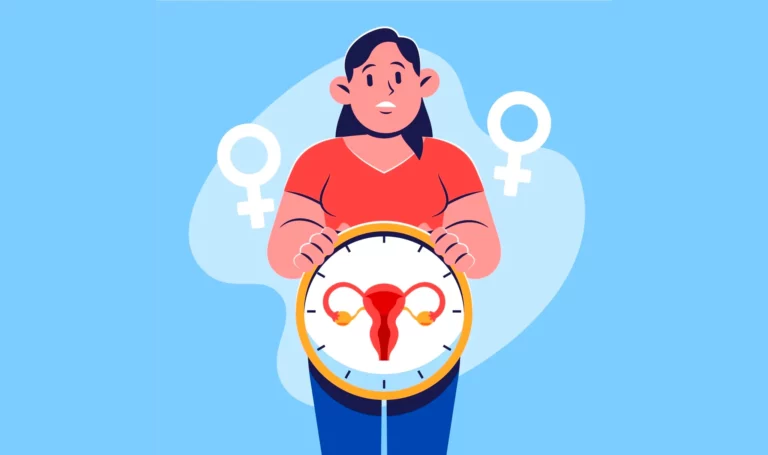The journey of having a child can be very emotionally challenging for couples suffering from infertility. However, the advancements in the branch of reproductive medicine has made it easier than ever to overcome infertility issues. One such advancement is ovulation induction, a method that is used during assisted pregnancy procedures to stimulate the ovaries and induce it to produce multiple mature eggs for fertilization, which ultimately increases the couple’s odds of successfully conceiving.
In this article, we will talk about ovulation induction, how it works, its process, advantages, who could benefit from it, possible side effects, along with the details on its role in conjunction with intrauterine insemination (IUI) and in vitro fertilization (IVF).
What is Ovulation Induction?
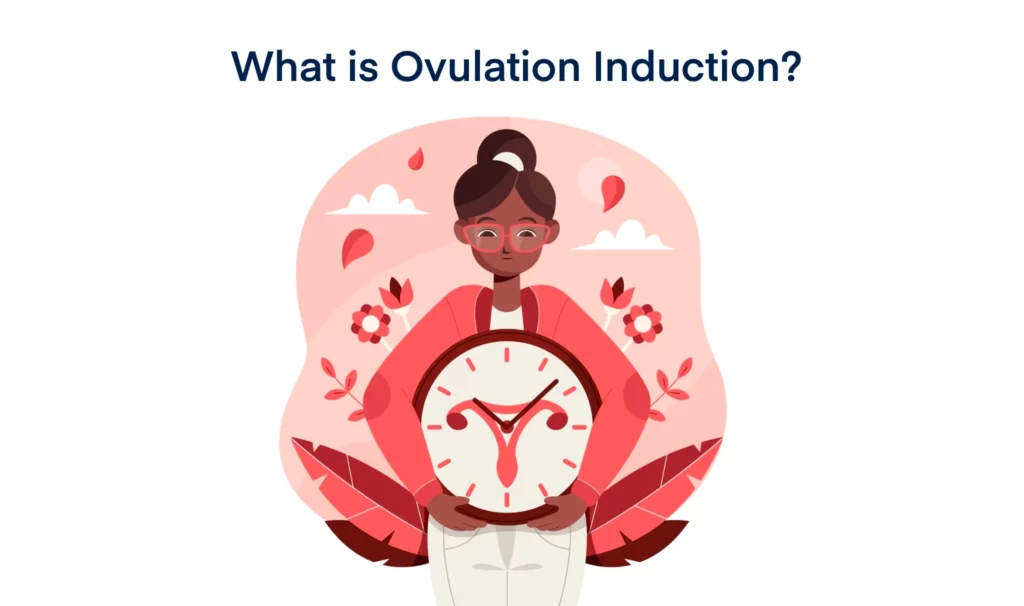
It is a fertility treatment used in conjunction with assisted conception procedures such as IUI and IVF treatment or separately as well. The treatment intends to stimulate the ovaries and trigger the release of multiple mature eggs during an ovulation cycle. It involves the use of certain medications to better regulate and enhance the production of hormones responsible for ovulation.
The approach of this procedure is to increase the number of fertilizable eggs, ensuring higher likelihood of successful conception.
How Does Ovulation Induction Work?
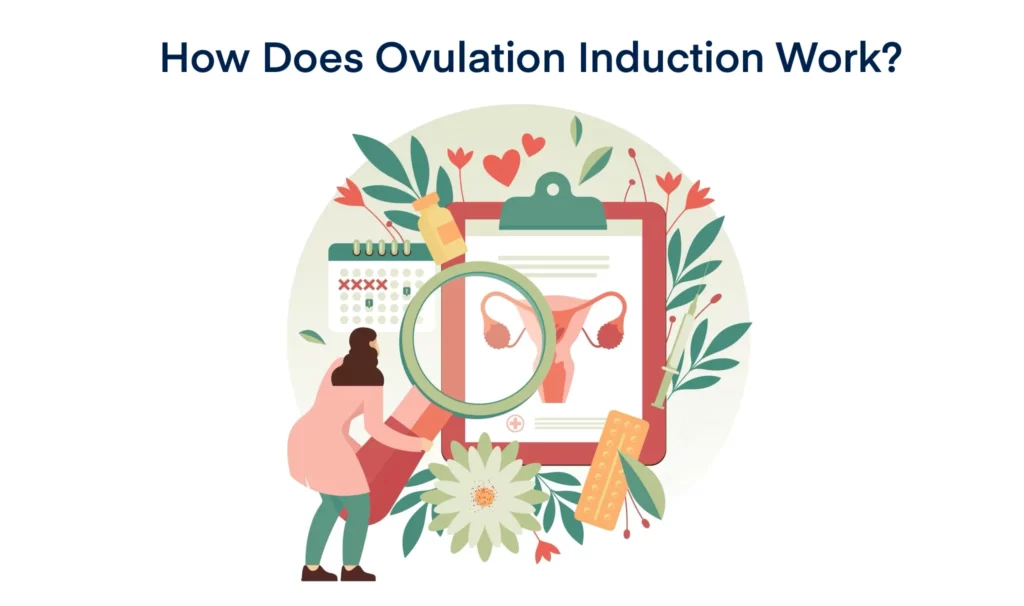
It mainly works by manipulating certain hormones responsible for ovulation. A woman naturally releases a single mature egg during an ovulation cycle. However, with the procedure, certain medications that are given to the woman induces the ovarian follicles to release multiple eggs.
The process roughly commences with a complete clinical assessment that involves monitoring the patient’s reproductive health, hormone levels, and ovarian reserve. Afterwards, oral or injectable fertility medications are administered to stimulate the ovarian follicles and encourage the development of multiple eggs with these follicles. The woman is regularly monitored through certain blood tests and ultrasound scans so that the IVF doctor could adjust the dosages of these medications as needed. Once the ovarian follicles indicate optimal development of the eggs, a final shot is given to trigger ovulation.
Ovulation Induction with IUI and IVF
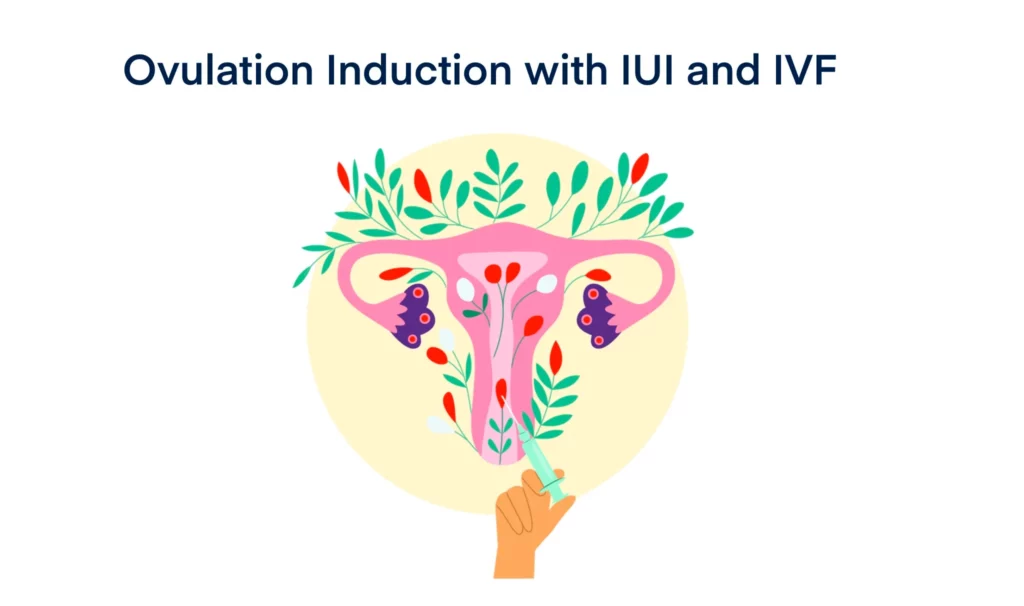
The procedure is often paired with assisted reproductive technologies (ARTs), IUI and IVF with the following approach:
- Ovulation Induction and IUI: IUI is an assisted conception procedure that involves inseminating washed and concentrated sperm directly into the patient’s uterus during her fertility window. When combined with ovulation stimulation, the number of available mature eggs increases, ensuring higher chances of successful fertilization.
- Ovulation Induction and IVF: Ovulation induction is a crucial part performed during IVF. During the IVF cycle, the fertility doctor may require multiple eggs to create viable embryos. Through the procedure, the doctor can stimulate the ovaries and get several viable eggs to create embryos. Availability of a higher number of embryos ensures higher chances of successful conception. The doctor can choose the most robust and viable embryo for transfer among all cultured embryos.
Medications Used for Ovulation Induction
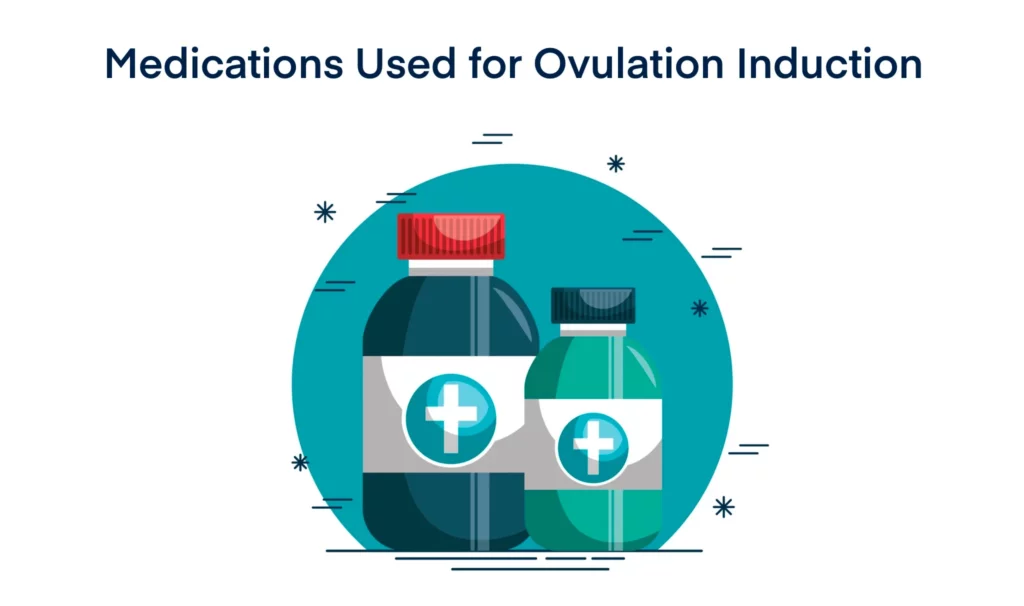
A variety of hormone medications are prescribed for the procedure. Some of these commonly prescribed medications are:
- Clomiphene Citrate: This is an oral medication that stimulates the production of follicle-stimulating hormone (FSH) and luteinizing hormone (LH). These hormones stimulate the development of eggs in the ovaries and regulate ovulation.
- Gonadotropins: This is an injectable medication that contains FSH and LH. Similar to clomiphene citrate, it stimulates the growth of eggs within ovarian follicles and regulates their release during the ovulation cycle. However, gonadotropin is not the first-in-line medication for ovulation stimulation. Because the medication is so powerful, it poses the risk of multiple pregnancies or ovarian hyperstimulation syndrome (OHSS) in some cases.
- Aromatase inhibitors: This type of medication is usually prescribed to patients who have PCOS. The medication is called letrozole and used for ovulation induction in the same way clomiphene citrate is used.
Who Could Benefit from Ovulation Induction?

It can be beneficial for couples struggling from the following fertility hurdles:
- Women with irregular or absent ovulation: Aspiring mothers who experience irregular or absolute absence of periods and ovulation cycles can benefit from it. The procedure can manipulate certain hormones that might be preventing ovulation and regulate ovulation.
- Polycystic ovary syndrome (PCOS): Women with PCOS have an excessive amount of male hormone, androgen in their body. This hormone affects periods and ovulation. Aspiring women with PCOS can benefit from it.
- Male factor infertility: It is when a male has low sperm count, sperm abnormalities such as poor motility and abnormal morphology, or a blockage that is preventing the delivery of sperm. Such couples can benefit from ovulation induction in conjunction with ICSI (intracytoplasmic sperm injection) or IMSI (intracytoplasmic morphologically-selected sperm injection).
- Unexplained infertility: Unexplained infertility is when fertility testing fails to conclude or explain one’s infertility. In most cases, unexplained infertility is concerned with fallopian tube blockage, poor egg or sperm health, or chromosomal abnormalities that lead to conception failures. The ovulation stimulation procedure can be beneficial for such couples as well.
Benefits of Ovulation Induction

Following are some significant benefits of receiving the procedure:
- Increased chances of conception: By regulating and enhancing the process of ovulation, it significantly increases the likelihood of achieving a successful pregnancy in patients who are encountering some fertility issues.
- Control over timing: Timing the intercourse within the fertility window is essential for couples to ensure better conception chances. The fertility doctor can precisely plan the procedure with timed intercourse to ensure higher chances of successful conception.
- Better utilization of fertility treatments: Couples who are struggling with infertility and planning to receive assisted pregnancy treatments such as IUI and IVF can enhance the effectiveness of the treatment by combining ovulation induction with it.
Step-by-Step Ovulation Induction Process
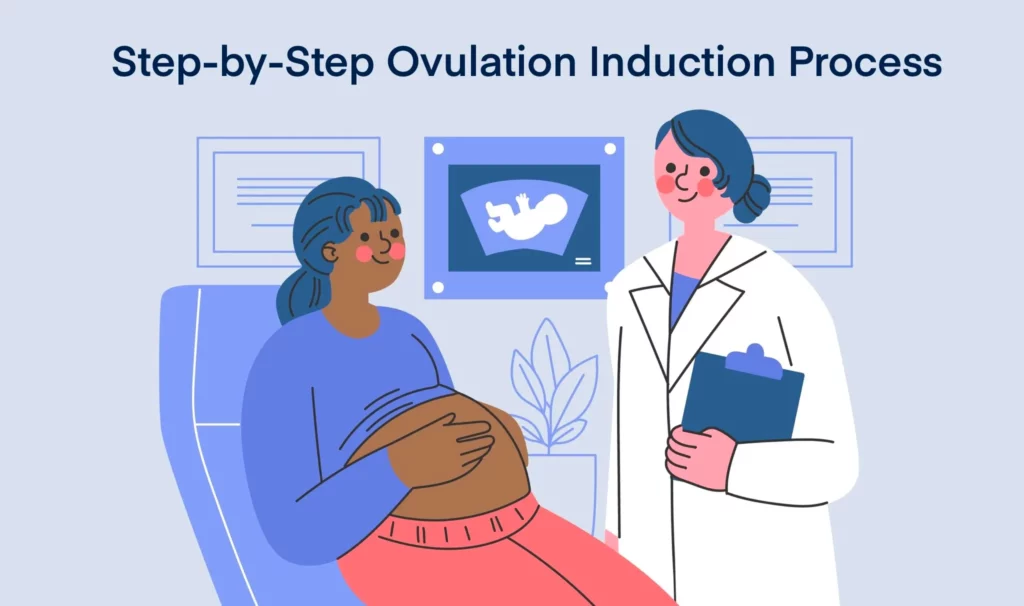
Following is the step-by-step process:
Step 1: Performing Initial Evaluation
A thorough clinical evaluation of the patient’s medical history, type and severity of infertility, hormone levels, and ovarian reserve is performed to determine the most suitable and effective ovulation induction approach.
Step 2: Starting Medication Regimen
After initial evaluation, medication regimen is commenced on the basis of the evaluation findings. The patient will be prescribed the medication in form or oral tablets or injections appropriately. Dosages will be adjusted depending on the response and the treatment will be closely monitored with regular blood tests and ultrasound scans.
Step 3: Monitoring the Induction
Once the patient is on medications, the doctor will closely monitor the development of follicles and assess the patient’s response to give medications to adjust the dosages if needed. To monitor, the doctor performs ultrasound scans and blood tests regularly.
Step 4: Triggering Ovulation
Once the follicles grow to the optimal stage and reach the appropriate size, a shot of human chorionic gonadotropin (hCG) is given to the patient, to induce the final maturation of the eggs and trigger their release from the ovarian follicles.
Step 5: Timing Fertilization
Depending on the opted fertility treatment, the doctor plans the timing of intercourse (natural pregnancy), insemination (IUI) or fertilization of the eggs in the laboratory (IVF). This optimizes the outcome of the fertility treatment.
Risks and Side Effects of Ovulation Induction
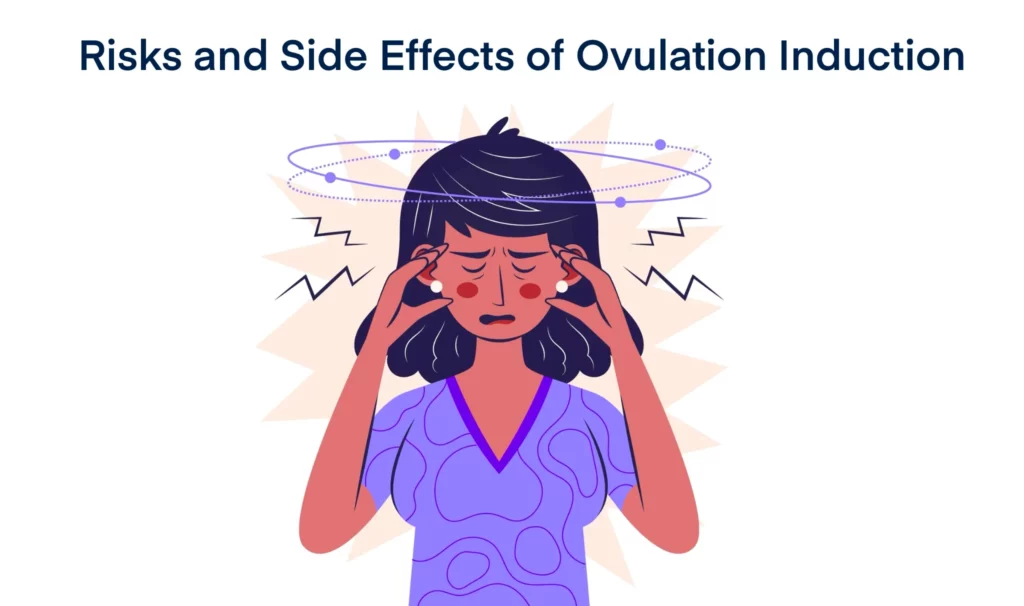
It involves the use of certain hormone-based medications that are likely to provoke some side effects. Though, in most cases, they fade away gradually without requiring any medical intervention. Also, in rare cases, the abnormal reaction to the given medicines can also pose the patient at a risk of developing certain health conditions.
Following are some such risks and side effects of receiving ovulation induction:
- Hormonal Side Effects: Medications used during induction can cause hormonal fluctuations, provoking side effects such as mood swings, irritation, headaches, and hot flashes. These are short-term and get better themselves.
- Allergic Reactions: Some patients may develop allergic reactions to fertility medications used during induction. Reactions may include rashes, itching, swelling or shortness of breath. If the patient experiences any of such reactions, they should see their doctor shortly.
- Ovarian Cysts: In some cases, ovulation stimulation can cause multiple cysts to grow on the ovaries. However, these cysts are generally benign and improve on their own.
- Multiple pregnancies: The stimulation of ovaries to produce multiple eggs poses the patient at a risk of having twins or higher-order multiples. Multiple pregnancies are not typically healthy and may cause certain health problems ro both the mother and the babies.
- Ovarian hyperstimulation syndrome (OHSS): Although rare, excessive response to fertility medications given during ovulation induction can lead to OHSS, ovaries becoming overstimulated. The condition is associated with side effects such as upset stomach, bloating, and vomiting. OHSS causes the ovaries to become enlarged and fluid starts to accumulate in the abdomen. Seeking immediate medical help is advised.
It is important to note that the likelihood of experiencing these side effects and their severity depends on various factors such as medications used, patient’s response to the medications, and presence of other conditions. Communicating regularly with the doctor for close monitoring is crucial to minimize the risk of any serious side effect and to timely diagnose and address the concern.
The Bottom Line

Ovulation induction is a very valuable tool combined with assisted reproductive technologies (ARTs) such as IUI and IVF. By stimulating the ovaries to produce multiple mature eggs, the procedure can escalate a couple’s chances of successfully conceiving. With the help of a fertility specialist, the couple can receive the treatment with minimal risk of unfavorable side effects and optimized outcome. The ovulation induction procedure has opened new doors for infertile couples on their journey towards having their own child and starting a family.

